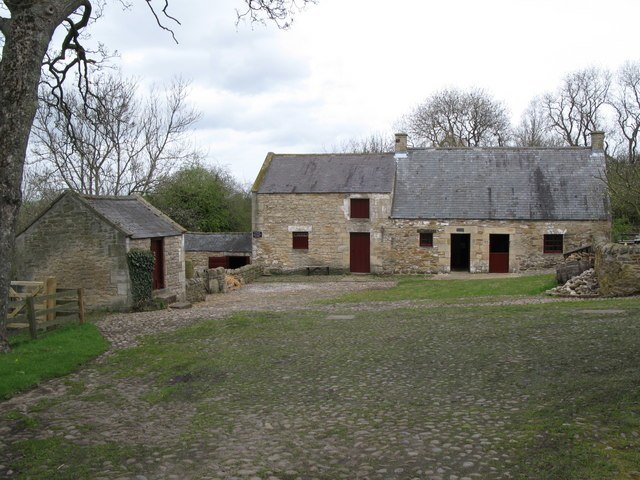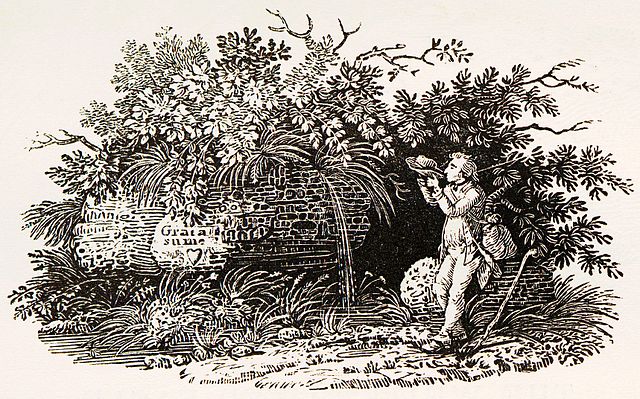Thomas Bewick was an English wood-engraver and natural history author. Early in his career he took on all kinds of work such as engraving cutlery, making the wood blocks for advertisements, and illustrating children's books. He gradually turned to illustrating, writing and publishing his own books, gaining an adult audience for the fine illustrations in A History of Quadrupeds.
Portrait by James Ramsay
Cherryburn, Bewick's childhood home
Tail-piece in A History of British Birds, said to be of Bewick himself as a thirsty traveller drinking from his hat
Thomas Bewick in 1827, by Thomas Sword Good
Wood engraving is a printmaking technique, in which an artist works an image into a block of wood. Functionally a variety of woodcut, it uses relief printing, where the artist applies ink to the face of the block and prints using relatively low pressure. By contrast, ordinary engraving, like etching, uses a metal plate for the matrix, and is printed by the intaglio method, where the ink fills the valleys, the removed areas. As a result, the blocks for wood engravings deteriorate less quickly than the copper plates of engravings, and have a distinctive white-on-black character.
Leather-covered sandbag, wood blocks and tools (burins), used in wood engraving
The Tench, A History of British Fishes (1835), by William Yarrell
Garb and weapons of the Ku Klux Klan in Southern Illinois, August 1875, photo made into a wood engraving.
This is a large wood engraving on an 1883 cover of Frank Leslie's Illustrated Newspaper. Such images were composed of multiple component blocks, combined to form a single image, so as to divide the work among a number of engravers.








